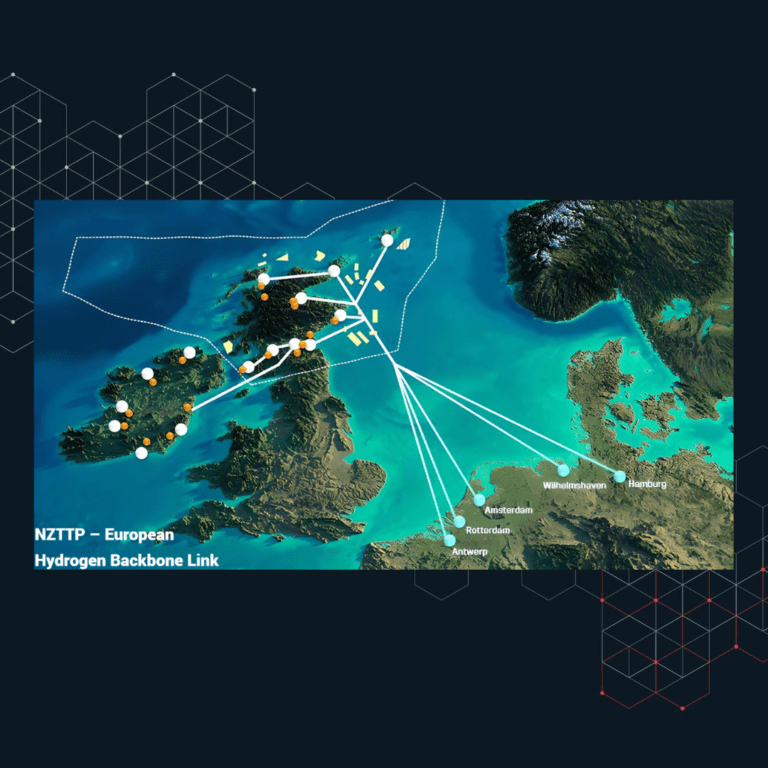Changing Impurity Limits In CCUS
As CCUS is further adopted worldwide, and the final investment decision is made for Porthos this year, it’s safe to say that this year is the year of carbon capture. As industrial projects start to kick off, it is vital that we ensure safe and effective operation such that public trust remains high.
Thus, great care is given to the impact of impurities on the fluid stream. These impurities arise from several combustion processes at industrial sources and can include water, nitrogen oxides, sulphur oxides, and hydrogen sulphide. These impurities, when not controlled can lead to catastrophic failure in pipelines, leading to the formation of acids, rapid corrosion, and loss of containment.
Pipeline rupture in CCUS is extremely dangerous, CO₂ is a potent asphyxiant and a 4% concentration in air can lead to rapid fatality. Despite this, and the severe loss in trust should a loss of containment occur, there are currently no international adopted impurity limits for CO₂ streams. Several industry projects have attempted to propose limits, which will be investigated to highlight trends and concerns for CCUS projects.
Initial efforts including the Dynamis project, were concerned with the impact of toxic impurities such as H₂S, and the impact of carbonic acid. As such the limits posed were fairly light, with values of 100 ppm mol for NOx and SOx, 500 ppm mol for H₂O, and a rather high 4% limit for oxygen. The Dynamis project was particularly impactful for the findings which showed solubility of water in CO₂ and hydrate formation curves. This work was followed in 2010 by the International Energy Agency Greenhouse Gas (IEAGHG) R&D division who sought to fully understand the stream composition and the full range of operating conditions to which equipment will be exposed. This allowed the teams to define the corrosion threats to typical CCUS pipelines.
With identified corrosion mechanisms including CO₂ corrosion, stress cracking, free-water corrosion, oxygen corrosion, and hydrogen attack, the stage was set to refine and understand if the limits set through the Dynamis study were suitable for pipeline transport conditions.
For the following 10 years, work led by the Institute for Energy Technology (IFE) would seek to define the suitable limits of impurities. The results, presented over several papers, would go on to show that a universal specification allowing the maximum number of impurities would not be possible. That corrosive fluid would drop out of solution despite being below the liquid saturation of the CO₂. This would heavily impact the allowable impurity limits for the Athos and Porthos projects, which were currently going through FEED at that time.
The significant differences from the initial Dynamis limits were a severe drop in allowable water, hydrogen sulphide, and both nitrogen and sulphur oxides. To prevent water drop out at the pressures and temperatures in the system water was limited to 70 ppm mol. To prevent the formation of H₂SO₄ limits on sulphur containing compounds was limited to 20 ppm mol, with H₂ limited to 5 ppm mol, and nitrogen oxide also limited to 5 ppm mol due to concerns with oxidisation and formation of HNO₃.
It was also deemed important to limit the expansion of the two-phase zone by limiting the amount of light inert impurities such as nitrogen, argon, and methane to 4 mol%, this would limit the growth of the bubble pressure and ensure the pipeline remained in single phase liquid flow at normal operating conditions. These limits were maintained in two UK projects and influenced decisions in Canadian CCUS projects that OGC Energy worked on.
When Aramis published their specification for CCUS gas, the limit on NOx decreased even further to 2.5 ppm mol, this decision was backed by experimentation by a consortium led by IFE. These stricter and stricter limits could potentially limit the entrance of NOx into the pipeline entirely.
Managing these limits and understanding the risk is incredibly important for CCUS projects. With emitters under scrutiny to prevent pipeline failure. The sticking point then becomes, is monitoring capable of ensuring these limits and is there capability in the CCUS system to halt production in cases where out-of-spec fluid is entered into the pipeline? It is therefore important that engineers and stakeholders understand these experimentally produced limits, reassessing the requirements of projects as their understanding improves. Engineers must reflect and consider: Are our current monitoring systems equipped to ensure adherence to these evolving standards? How can we collectively enhance our monitoring capabilities and response protocols to safeguard against potential risks?
Do you have questions on CO₂ specification and the impact of impurities? Contact us to arrange a discussion with our experts.



